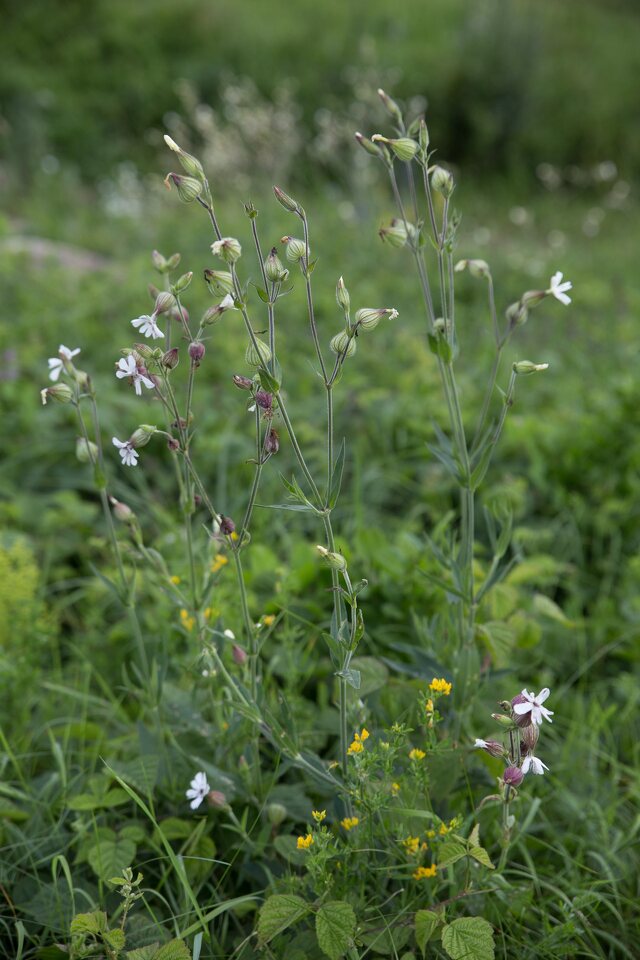
Silene latifolia · baltasis šakinys
- Melandrium album, Silene pratensis, Silene alba
- white campion
- Weiße Lichtnelke, Weiße Nachtnelke, Weißes Leimkraut, Nacht-Lichtnelke, Nachtnelke
- baltasis šakinys, baltažiedė naktižiedė
- baltā spulgotne
- lepnica biała
Silene latifolia is native to most of Europe, Western Asia and northern Africa. It is a herbaceous annual, occasionally biennial or a short-lived perennial plant, growing to between 40–80 centimetres tall. White campion grows in most open habitats, particularly wasteland and fields, most commonly on neutral to alkaline soils. Despite the wide array of conditions in which campion can thrive, it prefers sunny areas that have rich and well-drained soil.
The appearance depends on the age of the plant; when young they form a basal rosette of oval to lanceolate leaves 4–10 cm long, and when they get older, forked stems grow from these, with leaves in opposite pairs. The flowers grow in clusters at the tops of the stems, 2.5–3 cm diameter, with a distinctive inflated calyx and five white petals, each petal deeply notched; flowering lasts from late spring to early autumn. The entire plant is densely hairy.
Vienmetis augalas paplitęs Europoje, vakarų Azijoje, šiaurės Afrikoje, įveistas Šiaurės Amerikoje. Aukštis iki 1 m, stiebas status. Lapai 4-10 cm ilgio. Žiedai balti, 2,5-3 cm skersmens. Žydi vasarą. Auga šlaituose, pakelėse. Lietuvoje dažnas.
‥
0 comments
Add a comment